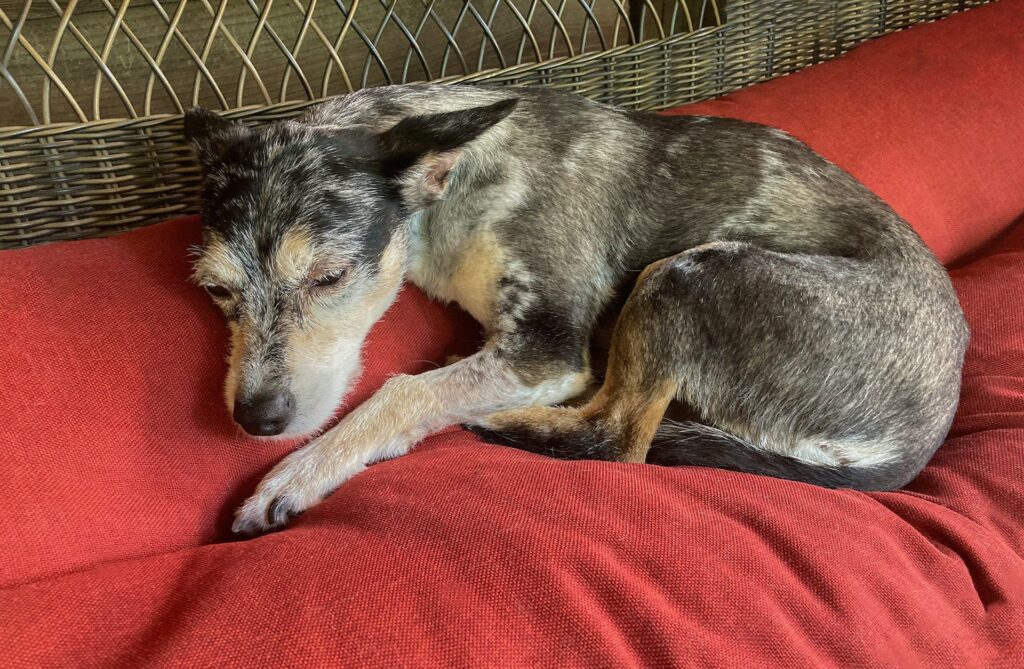You know if your dog is hungry.
You know if your dog is hungry if it shows increased interest in food or exhibits begging behavior. Physical signs include alertness at meal times or excessive licking of lips.
When your dog is hungry, it is crucial for maintaining its health and well-being. Dogs cannot verbalize their needs, making it essential for owners to interpret their behavior. A hungry dog might pace around the area where its food is usually served or make direct eye contact while you’re eating.
Pet owners need to observe these subtle cues, as consistent hunger can impact a dog’s mood and energy levels. Regular feeding schedules help mitigate excessive hunger, but staying attuned to your dog’s behavior ensures its dietary needs are met.
Proper nutrition is key to a happy and healthy pet, and recognizing the signs of hunger plays a pivotal role in achieving this. By staying observant, you can provide not just sustenance but also comfort to your furry friend.

Credit: www.foundanimals.org
Signs Of Hunger In Dogs
Your furry friend’s hunger can seem mysterious. Dogs communicate needs in their own way. Recognizing the telltale signs of hunger ensures a happy, healthy pooch. Let’s explore how to tell if your dog might be saying: “I’m hungry!”
Increased Interest In Food
One key sign that your dog is ready to chow down is a spike in food interest. This behavior might include:
- Alertness at the smell of food
- Watching you eat with intense focus
- Following you to the kitchen
When you notice these actions, it’s likely your dog’s stomach is rumbling.
Whining Or Begging
Dogs often resort to vocal cues when hungry. Listen for:
- Whines during mealtime
- Soft barks as if trying to communicate
- Any form of begging behavior
Soothing tones can help assuage their impatience as you prepare their meal.
Weight And Body Condition
A dog’s hunger can often be noticed through their weight and body condition. An ideal body condition keeps dogs healthy and energetic. Look out for subtle body changes. These hints reveal if a canine friend needs more nourishment.
Ribs Easily easily felt.
Run a hand along your dog’s side. If the ribs are quite noticeable, your dog might be underfed. A healthy dog should have a thin layer of fat over their ribs. This layer should not hide the ribs entirely nor should it be absent.
Unintentional Weight Loss
Notice your dog’s weight without much effort. When a dog loses weight rapidly, it could indicate insufficient food intake. Regular weight checks are essential. They make sure your dog maintains a healthy weight. Create a chart or use an app to track weight over time. It’ll help spot any drastic changes.
| Healthy Weight Signs | SignsSigns of Hunger |
|---|---|
| Ribs are palpable with a slight fat cover | Ribs, spine, and bones are prominent |
| Visible waist behind ribs when viewed from above | No discernible waist; loss of muscle mass |
| Tuck of abdomen—upward slope of the belly | tucksSevere abdominal tucks or sagging belly |
- Monitor meal times: Dogs that gobble down food may need more.
- Check for physical changes. Include weighing and feeling their body.
- Observe behavior: Increased begging could signal hunger.
Stay vigilant about your pet’s body condition. Seek professional advice if you notice any concerns. A balanced diet, paired with proper monitoring, ensures a happy and healthy dog.
Behavioral Indicators
Dogs communicate in subtle ways. Understanding your furry friend’s behavior is key to knowing when they’re hungry. Look for specific actions they exhibit. These tell-tale signs will let you know it’s time to fill their bowl.
Searching For Food
One sign of a hungry dog is consistent searching for food. This can include sniffing around the kitchen, hovering where food is prepared or stored, or even eyeing your own meal with keen interest.
- Nose to the ground, tail in the air.
- Watching every bite you take.
- Pawing at the place where their food is kept.
Chewing Or Eating Non-food Items
Hungry dogs might resort to chewing or eating things they shouldn’t. This behavior is known as pica. Items like toys, socks, or paper are common targets.
| Item | Description |
|---|---|
| Household objects | Anything from shoes to furniture corners. |
| Outdoor items | Sticks, rocks, and even bugs can be a snack. |
Changes In Eating Habits
Observing your dog’s eating habits can reveal their hunger levels. Sudden changes may indicate increased hunger.
Eating Faster
A hungry dog might eat at a quicker pace. Speedy eating can be a sign of hunger. Watch how fast your dog finishes their meal compared to their normal speed. If they’re consistently eating faster, it could signal increased hunger.
Finishing Food Quickly
If your dog is finishing their food more quickly than usual, take note. A bowl emptied in record time often means they could eat more. Pay attention to their behavior after meals. Look for signs such as searching for more food or remaining near the empty dish.
Medical Considerations
When your furry friend seems consistently hungry, it’s crucial to consider possible medical issues. Not all signs of excessive hunger stem from simple dietary needs.
Sometimes, underlying health conditions might provoke an increased appetite. Knowledge of your pet’s health is key to managing their hunger and overall well-being.
Underlying Health Issues
Dogs may show an increased appetite due to various medical conditions. Among these, diabetes, hyperthyroidism, and digestive issues stand out as the most common. These issues can dramatically affect your dog’s hunger levels. It’s important to observe any change in their eating habits closely.
Possible underlying health issues include:
- Diabetes often leads to increased hunger.
- Hyperthyroidism: accelerates metabolism, causing hunger.
- Intestinal parasites: May redirect nutrients away from your dog.
- Malabsorption: Prevents proper nutrient uptake from food.
Consulting A Veterinarian
To ensure proper care, schedule an appointment with a veterinarian if you suspect your dog might have a medical issue causing their hunger. A vet can diagnose health problems. They also provide effective treatment plans.
Consult your vet for:
- Professional diagnosis via blood tests, X-rays, or other methods.
- Nutritional guidance tailored to your dog’s specific needs.
- Medication and treatment options for diagnosed health issues.
- Regular check-ups are necessary to monitor your dog’s health status.
Early detection and treatment of any health condition can greatly improve your pet’s quality of life. Vigilance is vital in maintaining the health and happiness of your dog.
Credit: www.foundanimals.org

Credit: toegrips.com
Frequently Asked Questions for How Do You Know If Your Dog Is Hungry?
1. How Can I Tell If My Dog Is Constantly Hungry?
Dogs that seem constantly hungry might exhibit behaviors like frequent whining, excessive drooling, and hyperactivity around meal times. Carefully monitor their food intake to ensure they’re getting the right amount, and consult a vet if their hunger seems excessive.
2. What Signs Indicate a Hungry Dog?
A hungry dog may lick their lips, follow you to the kitchen, or stare intently at their empty food bowl. They might also become more vocal, pawing at you or their bowl as a way to communicate their need for food.
3. Should You Feed Your Dog Every Time It Begs?
No, feeding your dog every time it begs can lead to overfeeding and obesity. Instead, stick to a regular feeding schedule based on their breed, size, and veterinarian recommendations, and ignore begging behavior to discourage it.
4. What’s The Ideal Feeding Schedule For Dogs?
An ideal feeding schedule for dogs typically involves two meals a day—one in the morning and one in the evening. However, puppies and certain breeds may require more frequent feedings; consult your vet for tailored advice.
Conclusion
Your dog’s hunger cues are essential for their health and happiness. Observe their behavior and body language for signs of hunger. Balance their nutritional intake with a consistent feeding schedule.
Always consult with a vet for personalized advice. Keep these tips in mind, and you’ll ensure your furry friend is well-fed and content.







Leave a Reply